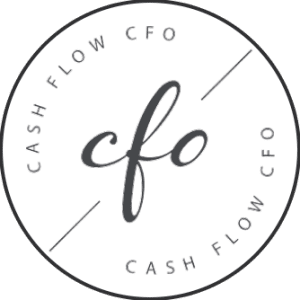In conversations with small business owners lately, one concern has repeatedly come up: cash flow problems. Some are dealing with rising operational costs. Others are frustrated by late-paying clients or the unexpected loss of a major account. But the most common issue for small businesses is a lack of strong cash flow forecasting.
Even profitable businesses can struggle to make payroll or cover upcoming supplier payments. Without accurate forecasting, planning effectively or spotting cash shortfalls before they happen is nearly impossible. The good news is that this can be fixed. You don't need a finance degree or massive reserves in the bank to take control of your cash flow. You just need visibility, the right tools, and a clear plan.
Why Your P&L Isn't the Whole Story
Your Profit & Loss (P&L) statement might tell you that your business is profitable—but that doesn't mean there's money in the bank. The P&L doesn't reflect your real-time cash position.
To truly understand your financial health, you need to monitor your balance sheet and, more importantly, have a clear cash flow forecast.
This is where cash flow forecasting becomes essential. Without it, you're driving blind.
Common Cash Flow Gaps and What Causes Them
If your business is struggling with cash flow, here are the most common culprits:
1. Accounts Receivable (AR) Delays
You might see solid revenue on your P&L, but if you offer payment terms—like Net 30, 60, or 90—your cash could be tied up in Accounts Receivable. If your accounting is accrual-based, this issue is even more likely.
Action Step:
Run an AR report. If anything is past due, get on a call with those clients and put a plan in place to bring them current.Consider offering early payment incentives or enforcing stricter follow-ups.
2. Loan Payments & Equipment Purchases
Your P&L shows interest expenses but not the full picture. The principal portion of your loan payments doesn't appear on the P&L, and neither do lump-sum equipment purchases. Yet both can significantly reduce your cash reserves.
Action Step:
Factor these payments into your cash flow projections, and ensure they're planned for in your monthly cash strategy.
3. Inventory and Material Costs
If your business requires upfront purchases of materials or inventory—especially with tight supplier terms—your cash may be going out long before client payments come in.
Action Step:
Review supplier payment timelines and align them as closely as possible with client payments. Consider negotiating extended payment terms.
4. Owner Draws and Distributions
Many small business owners don't realize how much personal draws impact the company's cash flow. These aren't always reflected in the P&L, but they reduce available cash immediately.
Action Step:
Set a consistent and predictable draw or salary schedule. Build it into your cash flow forecasting for small businesses to maintain visibility.
Growth Isn't the Problem—Lack of Planning Is
One important truth: your business likely isn't failing—it's growing. But here's the catch: growth without cash is dangerous. If you're hiring, expanding, or investing in marketing, but your cash flow isn't keeping up, things can unravel quickly.
This is why cash flow forecasting for small businesses is more than a financial task—it's a critical growth strategy.
The Solution: A Simple Plan to Get Back on Track
If you're ready to go from "barely covering bills" to confidently managing your cash, here's what to focus on:
1. Tighten Payment Terms
Encourage faster payments by offering small discounts (like 2% for payment within 10 days). Be proactive with reminders and consistent in enforcing terms.
2. Negotiate with Suppliers
Just like you want clients to pay faster, your suppliers want the same from you. But many are willing to negotiate longer terms if you ask—especially if you're a long-term client.
3. Build a Cash Flow Forecast
Stop relying solely on your P&L. Build a 13-week cash flow forecast to track incoming and outgoing cash weekly. This gives you time to adjust before problems arise.
Tip: Forecasts don't have to be complicated. You can build a simple version in a spreadsheet using projected income, fixed expenses, and known one-time costs.
4. Separate Profit from Cash
Profit and cash are not the same thing. A profitable business can still go under if it runs out of cash. Understanding this difference is key to long-term sustainability.

Final Takeaway
A P&L can make your business look profitable. But cash flow determines whether you stay in business.
Implementing better cash flow forecasting for small businesses gives you a real-time view of your financial health. It helps you make decisions confidently, cover expenses without stress, and fund your business growth from a place of strength—not survival.
If you're tired of guessing, stressing, or feeling caught off guard by your business bank account, we can help. At The Cash Flow CFO, we specialize in helping business owners build simple, powerful cash flow forecasting systems that bring clarity and control to your cash.
Ready to take the first step?
Book a free strategy session and let's talk about how we can help you build a cash flow forecast that supports your growth.